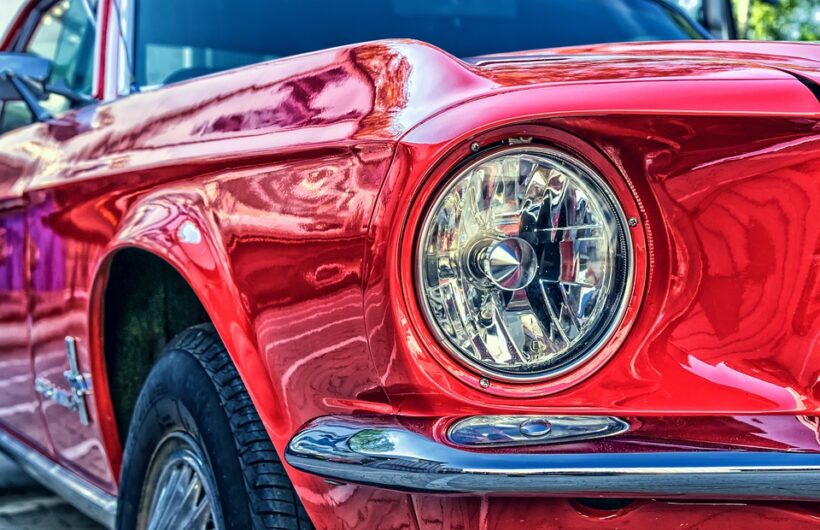Car paint is not only meant for the body of your vehicle; it’s also applied to protect the metal sheets underneath. Even though most see it as an aesthetic element, its major purpose is protecting the car body from dust, rain, and sunlight.
A quality coat of paint can extend the lifespan of a vehicle by preventing metallic corrosion, wear and tear, and rusting. However, if you want to get rid of overspray from your car, you may want to read more on this website. Today, we shall look at car paint types, composition, and processes in great detail. Let’s get started.
What Are Automotive Paints?
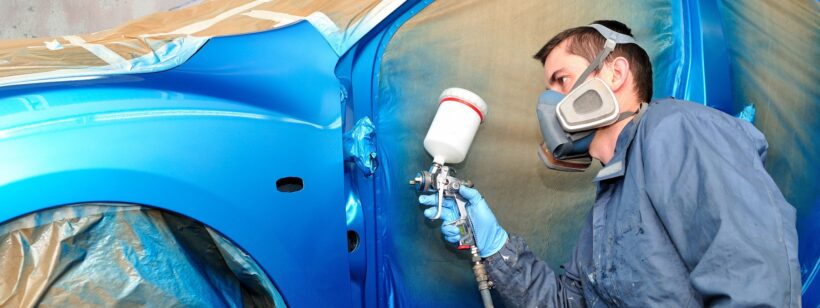
Car or automotive paint is applied to automobiles for aesthetic feel, protection, and durability. The most commonly used car paint type is water-based acrylic polyurethane enamel paint. It is popular due to its low environmental impact.
Modern car paint is applied in multiple layers with a total thickness of 0.1 millimeters. The application is conducted in several stages, including preparation, priming, and a final coat.
Composition of Automotive Paints
Car paints comprise three basic ingredients:
- A pigment is used to provide vibrancy and color
- The binder is used to bind the thinner and pigment
- Thinner provides a proper consistency for the paint
What Are the Chemical Compositions of Car Paints?
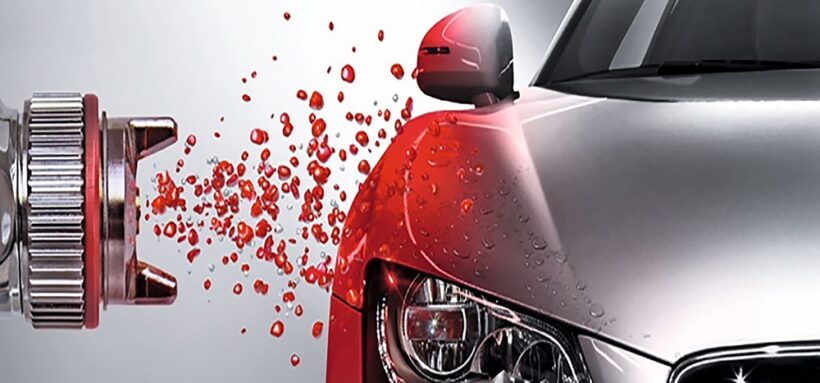
Acrylic Enamel
This type of paint creates a hard shell on the metal car body and lasts for a long time. However, these are not easy to apply and can only be managed by an expert and professional automobile painter.
Urethane
This is another durable car paint that lasts for 10 years or more. Urethane car paint is much more expensive than other types due to its unique chemical composition.
Acrylic Urethane
This is a relatively new type of car paint. These are water-based and a great option for those that only agree to the use of environmentally-friendly products.
Acrylic Lacquer
Many car manufacturers previously used acrylic lacquer paints, so you will likely find older car models with coats of these. This type of paint does not last very long and can start to fade when exposed to UV rays from the sun. However, it does give a nice glossy finish to a car’s body.
The Stages of Automobile Painting
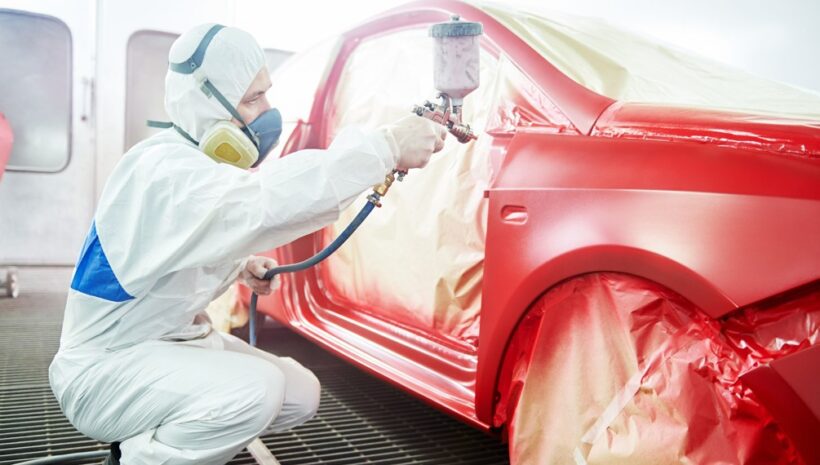
Stage 1: Primer
The first stage is a primer application commonly known as the pre-coat. A primer is a base of epoxy or urethane and is used to reduce the use of oil to protect the metal from corrosion and rusting. It also helps in leveling the surface of the car’s body and is useful for overcoming minor defects.
Stage 2: Base Coat
A base coat is the color coat for a car. These are often dull-colored and are used for fixing imperfections and minor dents. The base coat also makes the car’s body aesthetically pleasing and prepares the body for the final coat.
Stage 3: Clear Coat
The final coat is the clear coat that makes the car’s body durable. It helps prevent corrosion and withstands strong UV rays. There are 2 types of clear coats:
1. Waterborne Paint
These paints are water-based and not harmful to the environment. They use only 10% of other types of solvents apart from water.
2. Solvent-Borne Paint
These paints have a solvent base of either enamel, lacquer, or urethane. They contain greater amounts of volatile organic compounds and are damaging to the environment. Car companies have started to work towards using less solvent-borne car paints due to this.
Different Types of Automotive Paint Finishes
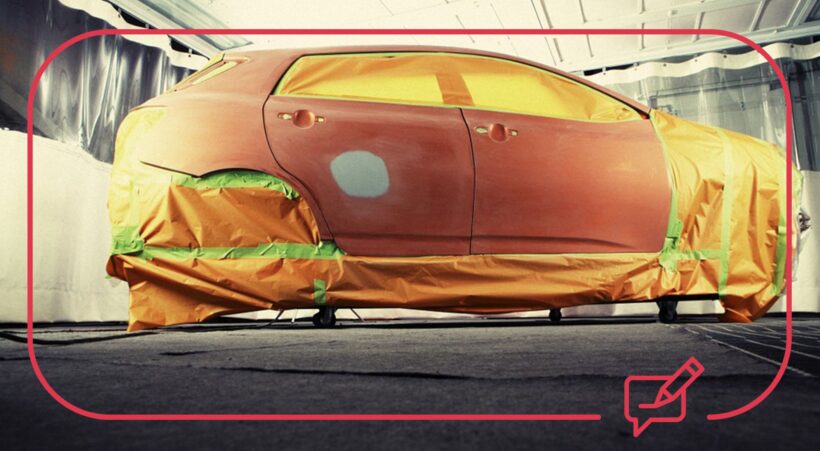
Automobile manufacturers use different types of car paints to give a different look to each of their vehicles. Each of these comes with its own set of advantages and disadvantages.
1. Metallic Paint
Metallic car paints are similar to solid paints but have a shinier finish. The metallic powder mixed with solid paint allows car manufacturers to give a vehicle a finished and more complete look.
Advantages
- Gives a bright and shiny touch to the vehicle’s body
- It can be used to hide minor damage
- It holds up well if cleaned and maintained regularly
Disadvantages
- Expensive compared to solid paints
- The exact metallic color can be tricky to find if a car’s body is damaged
2. Solid Paint
Vehicles commonly have a solid base coat such as white, red, blue, or black. A solid coat is followed by a coat of solvent-borne paint or lacquer clear coat for an extra layer of protection.
Advantages
- Metallic paints are inexpensive, so they are used to design affordable vehicles
- Easy to repair and maintain
- Minor scratches and chips can be fixed using a pen of the same color
Disadvantages
- Limited range of only four colors
- It may have an orange peel due to moisture affecting the coating process
3. Matte Finish
Car manufacturers use this type of paint for premium vehicles. Matte finish paint gives a high-end and sleek look to automobiles. It is usually available in black and gray tones only.
Advantages
- It is considered one of the most prestigious and premium car paint
- The paint absorbs extra light, which gives off a dull shine. This is appealing to a lot of car users
Disadvantages
- Very expensive to repair
- Requires a lot of maintenance
- Specialized shampoos and polishes are required for car cleaning.
4. Pearlescent Finish
Pearlescent coats differ from metallic powder because ceramic crystals are mixed with solid paint instead of metallic powder to produce them. High-end automobile manufacturers use this finish, which is available in various colors.
Advantages
- It is useful for hiding minor damages and scuffs
- It is used to give a pearly and iridescent look to the vehicle
- Offers spectacular color effects from various angles
Disadvantages
- More expensive than metallic and solid automotive paints
- Repairs require time, attention, and a higher budget
5. Specialty Paints
Some vehicle manufacturers use unique mixtures and various techniques to give their cars an even more finished look. These specially customized car paints are also known as specialty paints. They may have certain unique features, like changing color at the touch of a button.
Color-changing technology uses black and white pigments plus electrodes to enable the color switch. Lustrous or special finishes can be customized by paying a few extra thousand bucks added to the cost of the car. Some other examples include:
- Layering of lighter shades on darker shades to create a stunning tinted effect
- Layering pearlescent paints to create a multi-faceted look that bursts into a dazzling array of colors when sunlight hits the car body
- Using tinted lacquer paint for a dramatic effect
- Creating customized colors based on the buyer’s request, such as goldfish or intense gold
- Adding colored tint to carbon fiber during the manufacturing process
Does a Vehicle’s Paint Alter Its Resale Value?
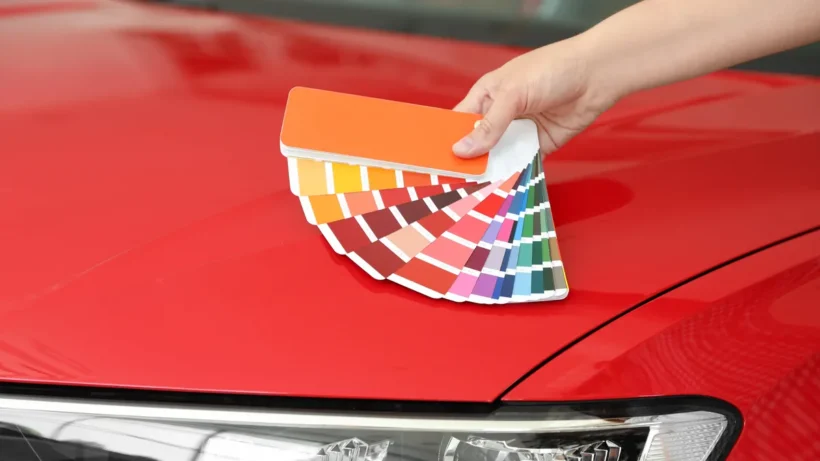
The paint type and condition of the car’s body can greatly impact the resale value of your vehicle. For example, a custom neon pink car may have a limited range of buyers. Metallic cars have a greater demand than those with a solid paint finish. Most paint options for a new car are fairly safe, but you must keep in mind that depreciation is something that cannot be prevented. Most car manufacturers will automatically offer a paint finish that has a reasonable resale value and will not prevent the car from being bought in the first place.
Endnote
Opting for a car with a layer of paint that is easy to maintain and clean is your best bet. If you have a good budget, you can also opt for customization but keep in mind that this can affect the resale value of your car.

